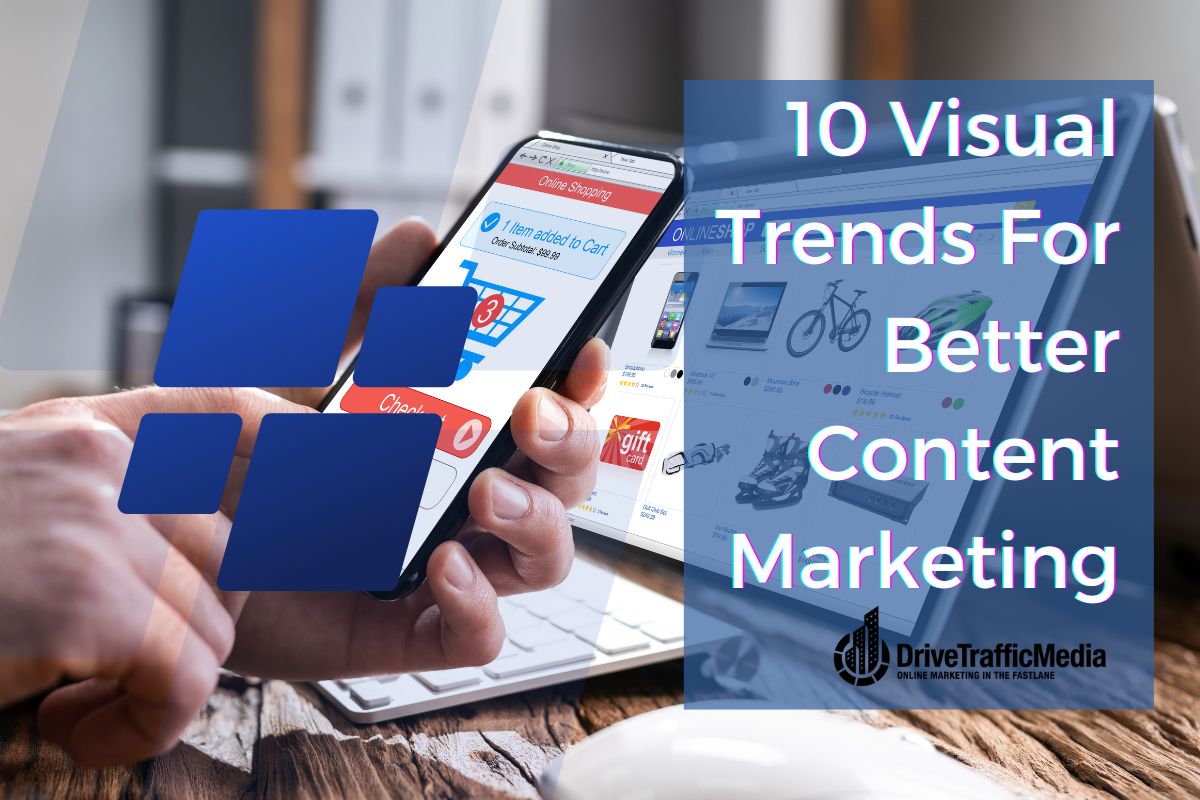COVID-19 is an awful period of history, and we can’t deny that. However, there were some bright sides—we learned that working from home is pretty awesome and that when united against a common enemy, humanity can do great things.
Small brands also flourished during the pandemic. Conducting business online really helped small business owners succeed and connect with more customers than ever before because now they were on a level playing field with the big guys. As long as you had great products, content, and excellent customer service, you could succeed.
However, there was a massive disadvantage of COVID-19 regarding marketing—the lack of face-to-face shopping. How was one to appropriately interact with their customers with physical distancing?
The answer is visual content marketing. Using images and videos, e-commerce websites filled the void COVID-19 left behind by providing an online shopping experience that is just as great in the comforts of home! So, if you want to accomplish the same feat with your website, hop on the visual marketing trends of today.
Authenticity
The relationship between businesses and customers has changed drastically over the years. People aren’t buying products from companies anymore—they’re buying from real people with honest workers and backstories. They want to know if you’re just like them! So, focus on what’s real. Have an interview with the CEO explaining why they founded the business. Show behind-the-scenes glimpses of production and packaging. Chat with your employees about what it’s like working for the company!
Infographics
Why stick with boring, old text when you can have colorful, attention-grabbing images that visualize your data even better? Infographics bring a lot of attention to your content as the human brain is just wired to process visual data better than text. There’s a reason even the most esoteric and academic textbooks have images—they’re just better to read and comprehend.
Image Optimization
As the name suggests, image optimization is search engine optimization but for images! Here, you want to optimize an image’s alt tags to better its chances of getting pulled up by Google. Users can search for a photo, find yours, and be directed to your website.
This is great for your e-commerce website since Google has also started adding price tags and ratings! Take a look at this example from Kate Spade:
Livestreams
It gets hard to distinguish what’s real and what isn’t on social media—something has always been edited, airbrushed, or swept under the rug, and it isn’t genuine and turns people off from social media. Livestreams are a great way of showing authenticity. They’re real-time transmissions, which means nothing gets edited—everything is on full display. And, since it’s in real-time, people are encouraged to watch it then and there. They can leave likes and comments, too, thereby increasing user engagement. Indeed, live videos typically get double the user engagement compared to recorded videos!
Gamification
Want to know how to make your brand even more fun and engaging? Turn it into a game! Posting a few challenges and rewarding customers directly interacting with you is an excellent way to boost user engagement. Duolingo, a language-learning app, is a well-known example of this. Users can build streaks and obtain achievement badges using the app daily. They learn a new language while having fun, and Duolingo has increased user activity.
Short Videos
The world we live in today is busy, busy, busy. We don’t have as much time to sit down and watch as many videos as possible. That’s why videos that are one minute long or even shorter are so attractive—they get the message across without taking too much of our time. They’re also super engaging and entertaining—you have to be if you only have one minute to show the viewers what you’ve got.
Shoppable Content
These days, people want things in an instant. Whenever they window shop on social media, they want to buy something then and there! That’s why many companies have started embedding purchase tags on their social media posts. Customers can tap on the item and buy directly on social media without visiting the e-commerce website. Some websites that offer this are Facebook, Instagram, and YouTube.
Ephemeral Content
If you’ve ever used Snapchat or Facebook/Instagram stories before, you’re probably already familiar with ephemeral content. This content only lasts 24 hours before they disappear into the void. You’re probably asking yourself—what’s the point of content that gets deleted after a day? Well, brief content creates a sense of urgency in the viewer. They can’t just put off watching it for another day; they need to watch it now. And according to Instagram, that can lead to up to a 58% increase in sales! Additionally, ephemeral content is excellent for user submissions. You don’t have to worry about them not matching your aesthetic or not being high-quality—they will disappear after a day, anyway.
GIFs and Animations
GIFs and animations have all the advantages of a video without a large bandwidth. With them, you can show how to use your product, set it up, or show it from various angles. You can also use these images to add oomph to your content with eye-catching graphics.
360o Panoramas
Not everybody has the privilege of traveling wherever they want to go. That’s why 360o panoramic videos have gotten so popular over the years—they allow people to virtually “visit” a place without physically being there! Viewers are dropped at the heart of the location and can move around and rotate with a few clicks and swipes.
On your e-commerce website, you can take advantage of 360o panoramas by letting your customers view your product from all angles, just like in a physical store.
